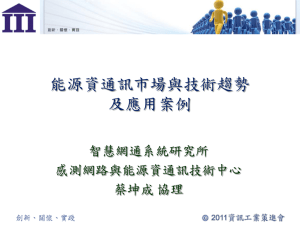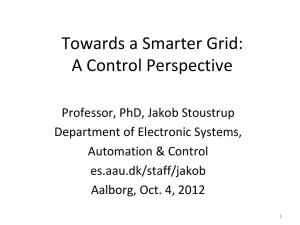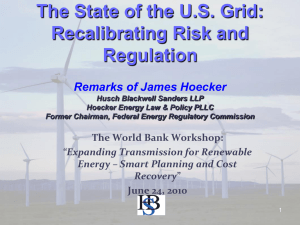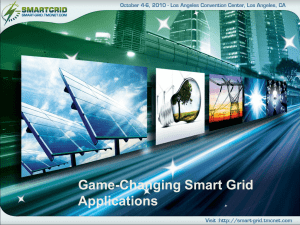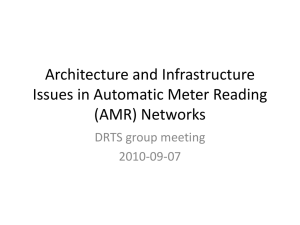Development of Energy System Smart Grids Based On Multi
advertisement
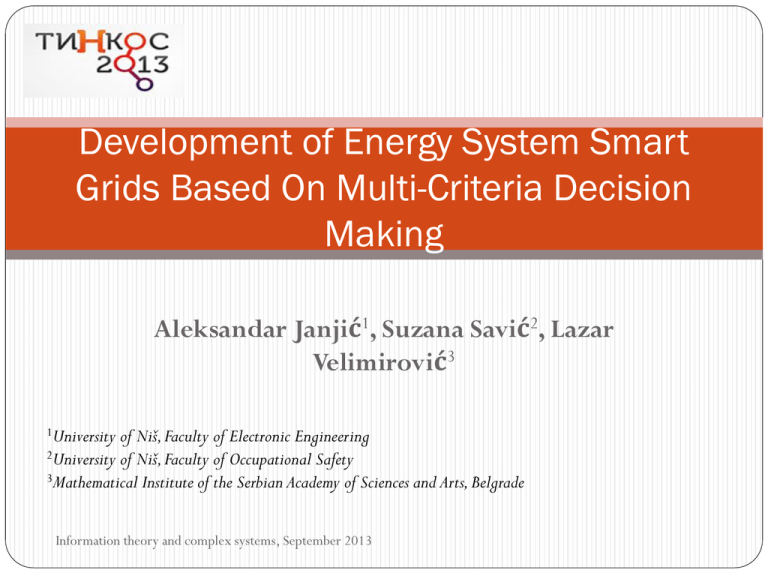
Development of Energy System Smart Grids Based On Multi-Criteria Decision Making Aleksandar Janjić1, Suzana Savić2, Lazar Velimirović3 1University of Niš, Faculty of Electronic Engineering 2University of Niš, Faculty of Occupational Safety 3Mathematical Institute of the Serbian Academy of Sciences and Arts, Belgrade Information theory and complex systems, September 2013 Content Smart grid definition Smart grid security Multi-criteria smart grid development Conclusion Information theory and complex systems, September 2013 1. Smart grid definition A smart grid is a modernized electrical grid that uses information and communications technology to gather and act on information, such as information about the behaviors of suppliers and consumers, in an automated fashion to improve the efficiency, reliability, economics, and sustainability of the production and distribution of electricity. Information theory and complex systems, September 2013 1. Smart grid definition - benefits Reliability — by reducing the cost of interruptions and power quality disturbances and reducing the probability and consequences of widespread blackouts. Economics — by keeping downward prices on electricity prices, reducing the amount paid by consumers as compared to the “business as usual” grid, creating new jobs. Efficiency — by reducing the cost to produce, deliver, and consume electricity. Environmental — by reducing emissions by enabling a larger penetration of renewables and improving efficiency of generation, delivery, and consumption. Security — by reducing the probability and consequences of manmade attacks and natural disasters. Safety — by reducing injuries and loss of life from grid-related events . Information theory and complex systems, September 2013 1. Smart grid definition Interaction of Actors in Different Smart Grid Domains through Secure Communication Flows Information theory and complex systems, September 2013 2. Smart grid security Potential risks associated with the evolution of the Smart Grid include: Greater complexity increases exposure to potential attackers and unintentional errors; Networks that link more frequently to other networks introduce common vulnerabilities that may now span multiple Smart Grid domains and increase the potential for cascading failures; More interconnections present increased opportunities for “denial of service” attacks, introduction of malicious code (in software/firmware) or compromised hardware, and related types of attacks and intrusions; As the number of network nodes increases, the number of entry points and paths that potential adversaries might exploit also increases; and Extensive data gathering and two-way information flows may broaden the potential for compromises of data confidentiality and breaches of customer privacy, and compromises of personal data and intrusions of customer privacy. Information theory and complex systems, September 2013 2. Smart grid security Information theory and complex systems, September 2013 2. Smart grid security Development of an effective cyber security strategy requires a holistic approach to analyzing risk. For example, an effective risk assessment approach entails “systematically documenting and prioritizing known and suspected control system vulnerabilities [threats] and their potential consequences,” so that “energy sector asset owners and operators will be better prepared to anticipate and respond to existing and future threats.” Risk is the potential for an unwanted outcome resulting from internal or external factors, as determined from the likelihood of occurrence and the associated consequences. Organizational risk can include many types of risk (e.g., investment risk, budgetary risk, program management risk, legal liability risk, safety risk, inventory risk, and the risk from information systems). Information theory and complex systems, September 2013 3. Multi-criteria SG development The analytic hierarchy process (AHP) is a structured technique for organizing and analyzing complex decisions. Based on mathematics and psychology, it was developed by Thomas L. Saaty in the 1970s and has been extensively studied and refined since then. Information theory and complex systems, September 2013 3. Multi-criteria SG development Composite High-level View of the Actors within Each of the Smart Grid Domains Information theory and complex systems, September 2013 3. Multi-criteria SG development R S B E Z λ U C T O A R M R – overall risk, S – social risk, B – security risk, E – economic risk, Z – substation importance, λ – substation failure rate, U – external influences, T – technology, C – circuit breaker state, A – age of the breaker, R – test results, M – maintenance level, O – alternatives Information theory and complex systems, September 2013 3. Multi-criteria SG development Ranking of criteria Age Maintenance Test results Age 1 ½ 1/3 Maintenance 2 1 ½ Test results 3 2 1 w1=0,158, w2=0,29, w3=0,54. Information theory and complex systems, September 2013 4. Conclusion The choice of adequate activity for planning smart grid development is a complex and difficult task. This is due to three main reasons: (1) presence of various alternatives; (2) existence of multiple criteria (economic, technical, environmental, etc.) to be met simultaneously, although they are often incommensurable and incomparable; (3) renewable energy sources in a distribution grid must be optimized based on operational needs and on algorithms used for the optimization Consequently, it is necessary to perform a multi-criteria analysis in the process of smart grid development Information theory and complex systems, September 2013
